
For many members of the home video generation, Lady in White - a 1988 coming-of-age story about kids, ghosts, and small-town racism, the triple threat - is a beloved childhood classic on par with more-credentialed contemporaries like The Watcher in the Woods (1980). For me, it's something I first learned about a week ago. Having now taken in a revival screening of the Extended Director's Cut of , I absolutely see the appeal. Lady in White plays like what would have happened if Alfred Hitchock directed To Kill a Mockingbird and decided there needed to be ghosts in it. Those two tastes shouldn't go together, yet a young director named Frank LaLoggia managed to turn it into one heck of a meal.
In the semi-autobiographical film, a young boy named Frankie (Lukas Haas) ends up locked in his school's cloakroom on Halloween where he both witnesses the ghostly re-enactment of a little girl's murder from a decade earlier and is almost strangled to death by a masked stranger. The school's black janitor is arrested for the attempted murder and charged with a 10-year backlog of child deaths, but with the continued urging of the little girl's ghost Frankie sets about solving the case and meets his own Boo Radley along the way. It's ultimately a lovely coming-of-age story about two children dealing with loss - one of them just happens to be a ghost.

To bring the story to life, LaLoggia had to face Armageddon and the 1980s stock market. That's what you do when you decide to make your movie outside of the system. In prior eras, Ed Wood conned a bunch of Baptists into giving him the money to make Plan 9 from Outer Space and Tobe Hooper took Deep Throat's mob money to make Texas Chain Saw Massacre; in a later era, Kevin Smith maxed out multiple credit cards to finance Clerks. Lady in White, however, was a film of the 80s, and LaLoggia looked for funding in one of the most 80s places possible: penny stocks.
Just in the Nick of Time
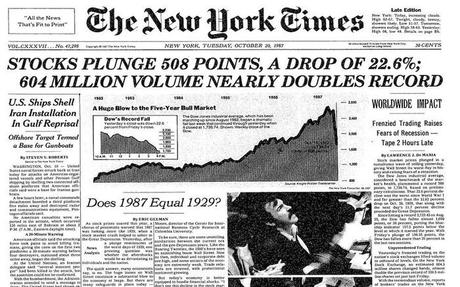
On October 19, 1987, the Dow Jones Industrial Average suffered the single largest one-day drop in United States history. Major world markets soon joined the chaos. Worldwide losses reached as high as $1.7 trillion U.S. dollars. The exact cause of this economic catastrophe - known as Black Monday - is still debated. Let's just go with: panic is crazy contagious.
Luckily, that didn't happen to Frank. He already had the backing of 4,000 upstate New York shareholders when the market crashed. By the time Lady in White was made and released, the writer-director-producer-composer-actor was 34 and co-owner of a stock-funded, independent film company (New Sky Communications) with its own office above Tommy Tang's trendy Thai restaurant on L.A.'s legendary Melrose Avenue.
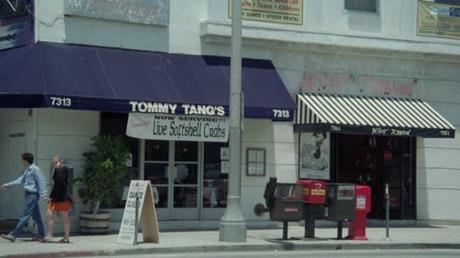
Ruined by the Idiots at the Studio
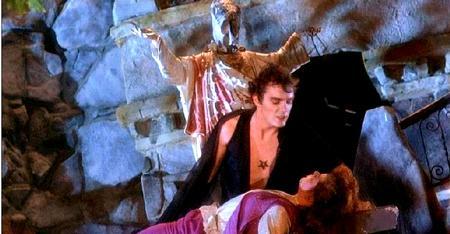
With the benefit of hindsight, LaLoggia now concedes maybe he wasn't quite ready for Fear No Evil. "[My cousin] Charlie came to me and said 'I think I can raise $200,000-$300,000 if we make a horror movie.' I wasn't opposed to the idea of making a horror movie," he r ecently told HalloweenLove.com. "He asked me to come up with a concept insisting that we use a place called Boldt Castle, in the Thousand Islands. Sometimes I think I wasn't ready to make that film."
Make it cheap, scary, and something that can be filmed locally. Hmm. What's scarier than the Armageddon? Maybe an Armageddon started by a high school student?
So, LaLoggia wrote a script about a high school senior who slowly realizes he's the AntiChrist and has to wage battle against reincarnated archangels. As you do. He called it Mark of the Beast. They later changed it to Fear No Evil. The tagline:

That's not the marketing angle LaLoggia would have picked. He thought he'd made a respectable film about good vs. evil; Avco Embassy thought it was a schlocky teen exploitation picture. The money people won.
Adding to the heartbreak: With the help of his cousin, LaLoggia independently financed Fear No Evil, his directorial debut, and actually filmed the majority of it in his hometown, Rochester, New York, with crew jobs and cameos handed out to any locals who qualified. They got all the way to a workprint before they ran out of money. Needing an additional $200k-$300k to finish the picture, Frank hoped Charles, an executive producer on the project, would canvass for more investors. Charles, however, insisted they screen their workprint for at least one distributor that might kick in the extra money. The very first distributor they turned to was Avco Embassy.
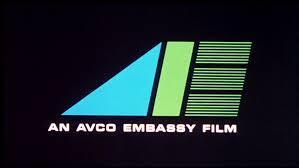
Over a decade earlier, Avco Embassy was just Embassy Pictures, a respected distributor of awards-winners like The Graduate and The Lion in the Winter. A merger turned it into Avco Embassy and aggressive expansions into both the TV and music industries left it nearly bankrupt by the mid-70s. New leadership brought forth fresh marching orders to focus solely on low-budget genre pictures. That's how we got Phantasm (1979), The Fog (1980), and Scanners (1981), and that's how the LaLoggia cousins found a distributor to cover Fear No Evil 's completion costs.
Then they took the movie away from Frank.
The bastards.
I assume.
Eh, I don't know. They might have been perfectly nice people who simply had different opinions, but if circa-1981 Roger Ebert is to be believed whatever they did to Fear No Evil did not work. The review starts at the 4:45 mark of the following compilation video:
Of course, for some being named a "Dog of the Week" by Siskel & Ebert would be viewed as a badge of honor, especially considering the famous critics' sometimes combative relationship with the horror genre. "If these guys hate something, I bet you Joe Bob Briggs loves it!" someone might have said at the time if not for the fact that self-described "drive-in movie critic" Joe Bob didn't get his first TV show until 1986.
In fact, there were plenty of critics who liked or at least admired parts of Fear No Evil. Cinefantastique 's John McCarty wrote:
"What Fear No Evil does have going for it, however, is ambition. LaLoggia has bitten off a huge theme for himself, the final destruction of Lucifer and the cleansing of the Earth's evils through divine intervention. As most of LaLoggia's more established contemporaries aren't tackling themes at all, let alone ones of size, this makes him a director to watch."
McCarty closed by giving readers a heads-up that LaLoggia's next project was reportedly a romantic fantasy akin to It's a Wonderful Life, and it was something to look forward to given the director's obvious talent.
Where Do You Go Once Your Dreams Have Been Crushed?
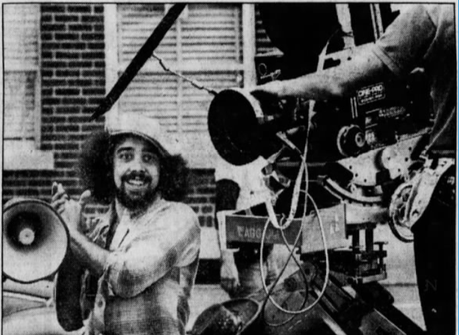 LaLoggia on the set of Fear No Evil.
LaLoggia on the set of Fear No Evil. One quick glance at LaLoggia's IMDB page verifies the project McCarty heard about never actually came to fruition. Neither did Respect Your Godfather, which LaLoggia told his hometown newspaper, Democrat and Chronicle, about in 1981 and described as "a satire of Coppola's Godfather films." He had multiple ideas for his next movie. Clearly. The industry just didn't care.
Fear No Evil's estimated break-even point - a little over $7 million in ticket sales - was attainable, but only for Avco Embassy. They made money on the picture. The LaLoggia cousins did not. "We didn't make any money on it because the deal that my cousin signed wouldn't have allowed us to ever make any money on the picture," Frank told HalloweenLove.com.
As far as the industry was concerned, LaLoggia was damaged goods. The promising start to his career - acting in a CBS sitcom pilot, earning two lines in a Jane Fonda movie ( Fun With Dick and Jane), writing and directing his first film by the time he'd turned 25 - was over. What now?
Learn: "[ Fear No Evil] taught me important things about myself," LaLoggia told the Democrat and Chronicle, "and the considerable struggle of dealing with the dichotomy of movie-making, the commercial-business aspects versus the creative end."
Keep the lights on: "I re-cut a couple of pictures for a company called Film Ventures," LaLoggia told HalloweenLove.com. "Not very good films."
Plan for next time: "I wanted to make a picture that I could take from beginning to end on my own," he told Newsday.
He felt inspired to make a movie about his Italian heritage, an homage to long-since passed relatives he missed, and at the same time, he couldn't get an image out of his head: a little boy trapped in a cloakroom. Lady in White grew from there, transitioning from the image in his head into a prose story about a little boy still grieving his dead mom connecting with a ghostly girl looking for her own dead mother. Then he turned it into a script with designs on directing, producing, composing, and even starring in it as the adult version of Frankie narrating the whole story Stand By Me-style.
This time, he wouldn't let the bastards screw him again. If only he could find a magical money tree somewhere or maybe an eccentric billionaire.
It Helps to Have an Investment Wunderkind in the Family
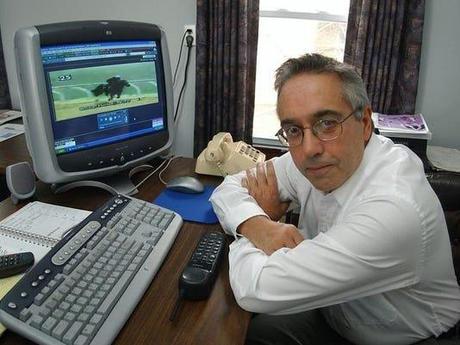 Charles LaLoggia in 2004.
Charles LaLoggia in 2004. When you're down and out like Frank after the Fear No Evil debacle, it helps to have a cousin who literally wrote the book on stock market investing. Or at least a cousin who will someday write that book. Charles LaLoggia eventually did just that, co-authoring 2001's The Superstock Investor: Profiting from Wall Street's Best Undervalued Companies. Back in the 80s, however, he was a man of three passions: the stock market, horse racing, and movies.
Described in his 2014 obituary as "an investment world wunderkind," Charles had already been to Wall Street and back by the time he was 23. A year at Merrill Lynch led him back to Rochester where he started writing both an influential newsletter of stock picks/analysis and a regular investment column for the Democrat and Chronicle. He also served as president of Thoroughbreds US Inc., a Rochester-based business firm specializing in horse racing and entertainment.
Point: When Fear No Evil didn't pan out as a money-making venture, Charles had other things going for him. Still, he wanted a second chance at the whole "film producer" thing.
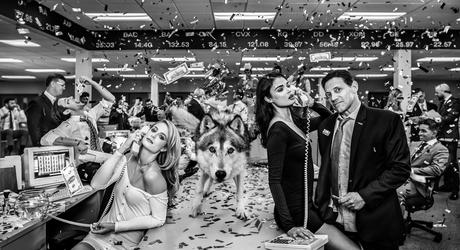 What penny stocks could get you in the 1980s if your name was Jordan Belfort.
What penny stocks could get you in the 1980s if your name was Jordan Belfort. The way it worked, according to Charles' obituary, was Thoroughbreds US Inc. issued stock to help finance Lady in White and changed its name from Thoroughbreds to New Sky Communications during the production of the movie. A Newsday article from the era claimed the stock actually sold for 10 cents a share, but describing it as a "penny stock" sounded so much better than "dime stock."
While Charles led the fundraising effort on the East Coast, Frank did the same in Los Angeles. There, he secured commitments from Lukas Haas ( Witness), Tony Award-winner Len Cariou, and his friend Katherine Helmond, best known as Mona on Who's the Boss, one of America's 10 most-watched TV shows at the time. In fact, Helmond pitched in a little of her own money to the fund-raising.
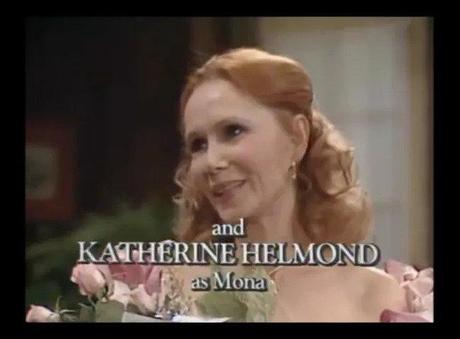
Across all of their fundraising efforts, Frank and Charles raised $4.5 million, and they endeavored to use the money wisely - meticulously storyboarding every scene prior to the 15-week production, forgoing a standard practice like a completion bond insuring against budget overages.
Lyons: Hollywood of the East
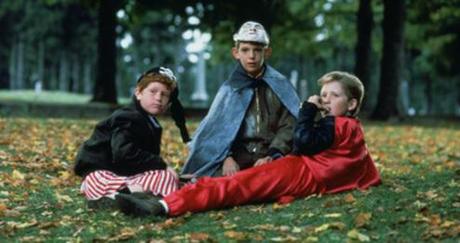 Lukas Haas and his bullies.
Lukas Haas and his bullies. "It did BETTER than re-coup its costs," Frank now says. "We made quite a significant amount of money on Lady in White."
Not that such deals were so commonly reported or understood at the time. Indeed, Lady in White was written about as a box office failure. LaLoggia told the penny stock story in enough interviews that it was at least well understood Lady in White cost nearly $5 million to make. It didn't come anywhere close to equaling that total in ticket sales. (One report from the times claims just $600,000 in domestic box office, but BoxOfficeMojo currently lists the Lady in White 's total take at $1.7m.)
When some Southern California movie-theater operators reneged on their deal with New Century/Vista and pulled Lady in White after just one week, the company's marketing president Richard Ingber took the unusual step of taking the dispute public, telling Daily Variety, "There was a time a picture could play in a theater and hopefully finds its audience. . . . Nowadays they can't sit still for one week."
It was an act of frustration by a man working for a company, New Century/Vista, that would be out of business within a year. However, he wasn't wrong. Due to an odd glut of new releases at the time - for example, 54 movies were released in April '88 compared to just 33 in April '87 - theaters had to be especially brutal with their quick hooks. Lady in White 's true audience was waiting at the video store.
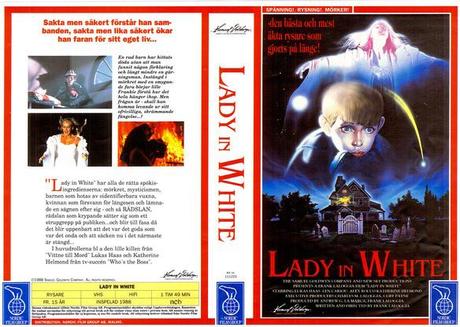
Virgin Video sure thought so. After paying millions for the home video rights, Virgin shipped an astonishing 100,000 copies - huge for an unknown film. Certain video chains in cities like Chicago and Philadelphia included Lady in White in a wider-promotion designed to give smaller films more of a chance against blockbusters. It seemed to work.
Most critics were likely pleased to see the film fighting to find a second life. There were, of course, some who just couldn't completely go for this Spielbergian ghost story, like the St. Louis-Post Dispatch which wrote, "You almost can foresee Lady in White being used in film schools as an example of how to screw up something very promising." Most, however, celebrated LaLoggia's against-the-grain choice to spin an old-fashioned ghost story when the rest of the industry was busy looking for the next Freddy Krueger.
"An excellent reminder of what horror films once were and could be in the hands of a dedicated artist," ravedWhat a pleasure not to wade through a pile of bodies," exclaimed the clearly sick-of-slashers Chicago Tribune Review.
The comic relief scenes featuring Frankie's family - his father, older brother, and live-in grandparents constantly fighting over the grandpa's inability to quit smoking - were described by some as "too cloying." The New York Times, however, ate it up with a spoon, writing, "The extended Scarlatti family -warm, funny, so real they make the characters in Moonstruck seem like impostors."
Like so many other films from that era, however, Lady in White 's legacy built over time as a beloved gateway horror film first enjoyed on VHS and then eventually through endless cable video repeats.
A Modern Re-Appreciation

When watched now, Lady in White does have some ragged edges. There's a Basil Exposition scene with a mailman who puts Frankie on his knee and tells him everything he needs to know about the plot, which is a bit odd since the mailman hasn't factored into the story before and doesn't appear again after. A stray bit of voiceover explaining the story's Boo Radley - Katherine Helmond's Lady in White character who turns out to be quite benevolent instead of threatening - arrives a bit too late in the game. The special effects work supervised by Gene Warren Jr. ( Fantasy II) shows its age. Some of LaLoggia's narration ("Responsibility became my constant companion") is a bit overwrought.
But Lady in White is an incredibly confident sophomore feature with an identity all its own and a universal story about loss. It still possesses the power to sweep you up in its story, even if the true killer's identity is immediately obvious through adult eyes. Promoting Shout Factory's 2015 Blu-Ray release of the film, LaLoggia reflected on its lasting legacy:
There's something in the film that everyone can relate to. There's nothing about the film that categorizes it or makes it solely a film for a particular core group. For example, I've never considered Lady to be a "horror film." I never believed the film to be anything as to categorizing it. I never thought of the film as anything other than a story I wanted to tell, period. Within the context of the story there were a lot of elements that drove it forward that were thrilling, that were mysterious, that were exciting, and that's what good storytelling is all about.
In the immediate aftermath of Lady in White, all of that was still in front of LaLoggia. Talking to Cinefantastique in 1988, he spoke with pure wanderlust and alluded to all the different emotions he wanted to explore in future films. "I'm interested in big canvasses," Laloggia said. "I want to cry, I want to laugh, I want to jump."
The catch: There would be no repeat of Fear No Evil. The man wasn't going to get him again. "And I don't want anyone to catch it. If we can continue to raise money on an independent basis, I'll be the happiest guy around."
His cousin, Charles, kept trying, but his film producing career only included one more movie, the 1999 Steve Zahn comedy Freaks Talk About Sex, later released on home video as Blowin' Smoke. Charles died in 2014.
What a Legacy
Once upon a time, two cousins from the Rochester area made a couple of movies in their own backyard. They had to beg, borrow and not-quite-steal to make it happen. The Hollywood machine did its things to these naive outsiders. They then turned to one of the most unique funding sources in film history - the penny stock - to produce a truly lovely PG-13 ghost story still written about today as one of the best gateway horror movies to show to kids.
All these years later, Frank's still trying to add to that legacy. As with Lady in White, he created a 10-minute promo reel for a potential new project, a musical comedy called Miro/Miranda!
Sources: Newsday, Chicago Sun-Times, HalloweenLove.com, Democrat and Chronicle, Cinefantastique
